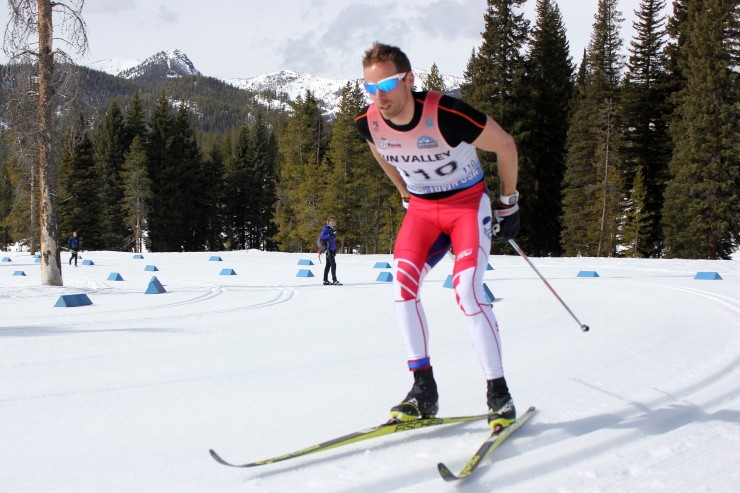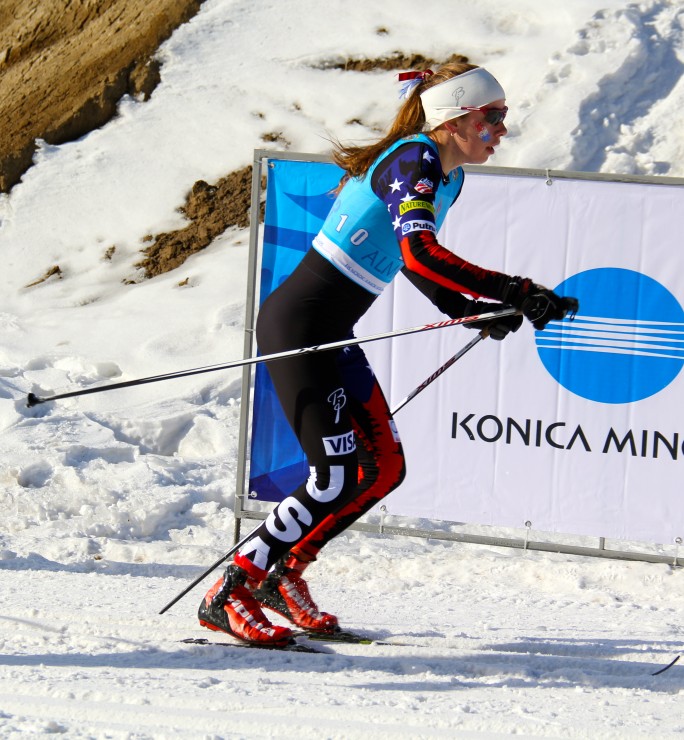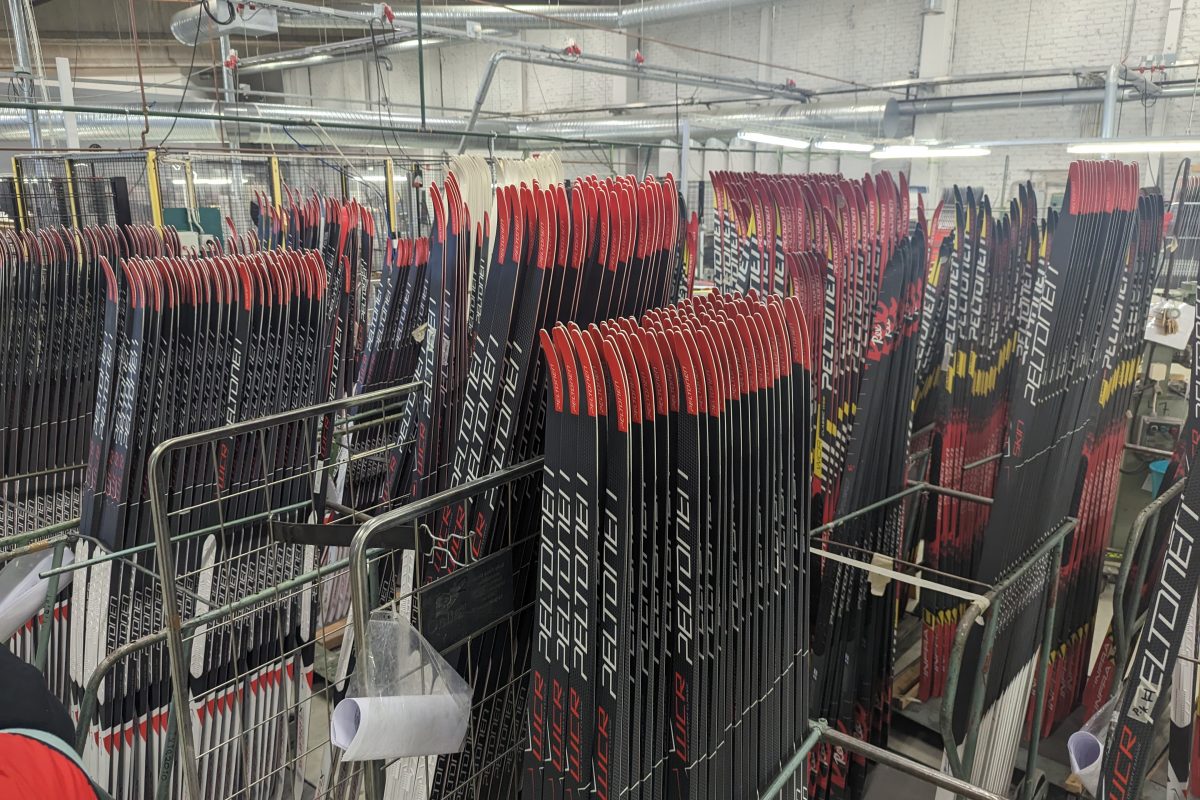
The U.S. Ski and Snowboard Association (USSA) announced its cross-country team nominations for the 2015/2016 season on Thursday, naming 16 athletes to the team, four more than the previous year.
All 12 athletes from 2014/2015 will return, led by Liz Stephen (Burke Mountain Academy) who finished 10th overall in the season’s World Cup standings. Other A-team athletes include 2015 World Championships silver medalist Jessie Diggins of the Stratton Mountain School T2 Team (SMST2), three-time World Cup sprint champion Kikkan Randall of Alaska Pacific University (APU), Sadie Bjornsen (APU), Sophie Caldwell (SMST2), Ida Sargent (Craftsbury Green Racing Project), Andy Newell (SMST2), and Simi Hamilton (SMST2).
The B-team will feature returning athletes Noah Hoffman (Ski and Snowboard Club Vail) and Erik Bjornsen (APU).
Rosie Brennan (APU) and Caitlin Gregg (Team Gregg) are two new additions to the B-team after breakthrough seasons. Like Diggins, Gregg earned a historic medal in the 10 k freestyle at World Championships in Falun, Sweden, placing third after Diggins. Brennan broke into the top 20 on both the World Cup circuit and at World Championships, most notably in the 30 k in Falun where she placed 16th. Brennan returns to the USST after being a member of the team in 2007/2008 and 2008/2009.
The D-team will also grow in the 2015/2016 season with the addition of two women, Katharine Ogden (SMS) and Julia Kern (Cambridge Sports Union). They were named along with returning D-team athletes, Ben Saxton (SMST2) and Patrick Caldwell (SMST2/Dartmouth).

There are objective requirements to earn an automatic nomination to the U.S. Ski Team (USST). An athlete must either be in the top 50 in the overall World Cup rankings or have a top-30 ranking in the distance or sprint disciplines. A skier can also be ranked in the top 30 of the FIS points list in distance or sprint list to earn the nomination. A final qualifying criteria is a top-three finish at either the Junior or U23 World Championships.
Nine athletes automatically qualified for the team: the eight A-team athletes, who all met the World Cup ranking criteria, and Gregg, who was 27th in the International Ski Federation (FIS) distance points list. The remaining seven skiers were all chosen by discretion.
Although Gregg made the objective criteria, she was not ranked in the World Cup’s Red Group and thus was placed on the B-team.
As in past years, USSA will cover the majority of the eight A-team athletes’ expenses. According to USST Head Coach Chris Grover, there are several instances when A-team members will have to cover their own costs, such as the training period over Christmas when the team prepares for the Tour de Ski.
The B-team athletes will receive some support in the form of lodging and meals at certain training camps, such as the upcoming Park City training camp occurring later this month. However, during the actual season, B-team athletes receive no support from USSA in terms of travel and lodging.
D-team athletes are expected to pay for everything they do throughout the season, but receive the support of the national-team infrastructure, such as coaching, when necessary.
According to Grover, the National Nordic Foundation (NNF) has financially aided both B- and D-team athletes at training camps and during the competition season in the past.

Grover: ‘We’re really excited to see what people can do’
After the nominations were announced, Grover said that he was excited to see what the group of 16 skiers could accomplish in the upcoming season. Although there is no major championship event in the 2015/2016 schedule, he believes that the Americans have an opportunity to shine.
“I’m really excited for the season because I felt like we had so much bad luck with our crew last year,” he said on the phone. “We made some mistakes as a nation and as a coaching crew both within the USST coaches and also with the club coaches. We had bad luck in terms of injuries. First of all, I doubt we will have those injuries again and second of all I think we will learn from some over-training issues going forward.”
The most notable injuries of the season came from Sophie Caldwell and Hoffman. Caldwell broke both her elbows in the leadup to the season, which hindered much of her preparation. Hoffman fractured his leg in a November crash — his first World Cup race of the season — which took him out of competition and full training until late February 2015.
In terms of overtraining, Grover pointed to two specific athletes — Newell and Randall — who may have suffered from its effects throughout the season.
With no championship event, the team will have varying focus races between athletes. However, Grover said that the Tour de Ski and the season-ending Canadian World Cup tour are two events that many team members will target. With a “home-time-zone” advantage and a small break spent in the U.S. to prepare beforehand, Grover said that the Canadian tour gives his team an opportunity for high performance. The midseason World Cup weekend in Nove Mesto, Czech Republic, is another focus as it features some of the Americans’ best events: a freestyle individual distance and a team relay.
Grover explained he’s interested to see how the newcomers perform in their first seasons as full-time World Cup athletes, especially after successful 2014/2015 outings.
“[Brennan] dominated domestically in the fall. We’ve talked about her a lot — she was in great shape last summer when we saw her at the camp at Eagle Glacier and she carried that shape into the fall,” Grover said. “Then she showed up on the World Cup and she proved that her domestically really translated to her speed internationally. It was natural to put her on the B-team.”
“Caitlin by contrast struggled in the early part of the season. She was the Continental Cup leader during the whole first period and she wasn’t skiing particularly fast at that time,” he added. “She went home, regrouped, she obviously did some good training in Colorado. She came back and did some really good skiing in Falun and Holmenkollen in particular.”
Grover said that the coaching staff will be “selective” as to which races they enter the 34-year-old Gregg because of limited starting spots and her tendency for high performance when targeting certain races.
“For her it doesn’t make sense for her to dive into a full World Cup schedule,” he said. “She has shown that she does her best when she targets key events that play to her strengths. One key thing that’s on her radar is the 15 k freestyle in Davos in the middle of December.”
On the World Cup circuit, the U.S. has lost two sprint starts for the women — a reduction from six to four — and will only be able to start seven women in the season’s tours, which make up just over half of the season’s races. (Tour starts are calculated by adding distance spots plus half the sprint spots). With eight women on the A- and B-teams, the entire team will not be able to start the tours. One exception will be the Ruka mini tour in Kuusamo, Finland, which allows an additional spot for the Continental Cup leader for Period 1. Since Brennan will be the leader at the time, all eight women will technically be able to start the mini tour.

D-Team: An Opportunity for Extra Support
The D-team will double in size from two to four in 2015/2016 with the addition of Ogden and Kern. According to Grover there were several athletes who were strong candidates for positions on the team.
“It’s hard because there are a number of athletes who are out there that could have potential D-team positions,” he said. “Especially on the guys’ side, there are a lot of guys who are really close that maybe had one or two real standout races for the year. There are a lot of guys we are keeping an eye out for and we just want to watch really for another year and see how they develop and see if they can have some big results in Europe.”
Grover explained that Ogden and Kern have been at the top of women’s junior racing in the U.S. for several years and that their successes last season proved they were ready for national-team support.
“With Katharine and Julia, those are two juniors who have been the best juniors for a few years. In general they have been two of the standouts,” Grover said. “Katharine was one of the obvious choices, as her result at the Junior World Championships is one of our historic best U.S. finishes of all time. Julia had some really standout results on the Europa Cup and Slavic Cup in particular where she was the fastest American woman.”
While the D-team does not provide any special starting rights or automatic trip qualifications, it does allow its athletes to take advantage of the USST infrastructure. According to Grover, its four members will have access to USST perks such as sports medicine, sports science and coaching that wouldn’t otherwise be provided to National Training Group (NTG) athletes.
2015/2016 USST Nominations:
A-team
Men
Andrew Newell (Shaftsbury, VT; SMS T2; 11/30/83)
Simi Hamilton (Aspen, CO; SMS T2; 5/14/87)
Women
Sadie Bjornsen (Winthrop, WA; Alaska Pacific University Nordic Center; 11/21/89)
Sophie Caldwell (Peru, VT; SMS T2; 3/22/90)
Jessie Diggins (Afton, MN; SMS T2; 8/26/91)
Kikkan Randall (Anchorage, AK; Alaska Pacific University Nordic Center; 12/31/82)
Ida Sargent (Orleans, VT; Craftsbury Green Racing Project; 1/25/88)
Liz Stephen (East Montpelier, VT; Burke Mountain Academy; 1/12/87)
B-team
Men
Erik Bjornsen (Winthrop, WA; Alaska Pacific University Nordic Center; 7/14/91)
Noah Hoffman (Aspen, CO; Ski and Snowboard Club Vail; 8/1/89)
Women
Rosie Brennan (Anchorage, AK; Alaska Pacific University Nordic Center; 12/2/88)
Caitlin Gregg (Minneapolis, MN; Loppet Nordic Racing; 11/7/80)
D-team
Women
Julia Kern (Waltham, MA; Cambridge Sports Union; 9/12/97)
Katharine Ogden (Landgrove, VT; Stratton Mountain School; 11/17/97)
Men
Patrick Caldwell (Lyme, NH; SMS T2; 2/18/94)
Ben Saxton (Lakeville, MN; SMS T2; 6/3/93)
Lander Karath
Lander Karath is FasterSkier's Associate Editor from Bozeman, Montana and a Bridger Ski Foundation alumnus. Between his studies at Middlebury College in Vermont, he is an outdoor enthusiast and a political junkie.



